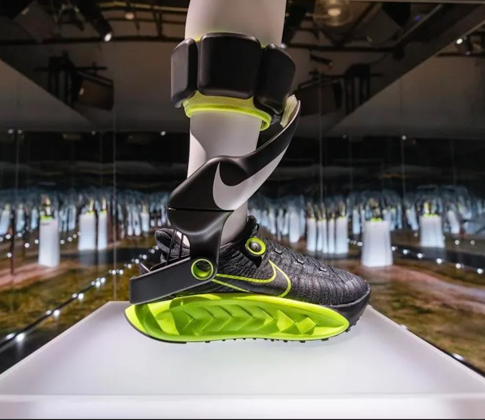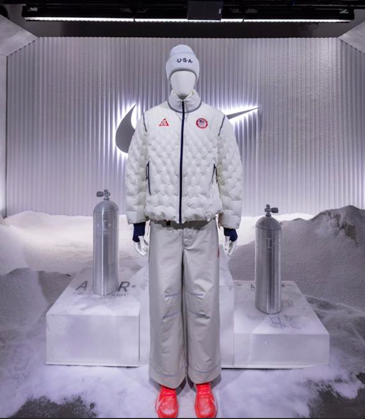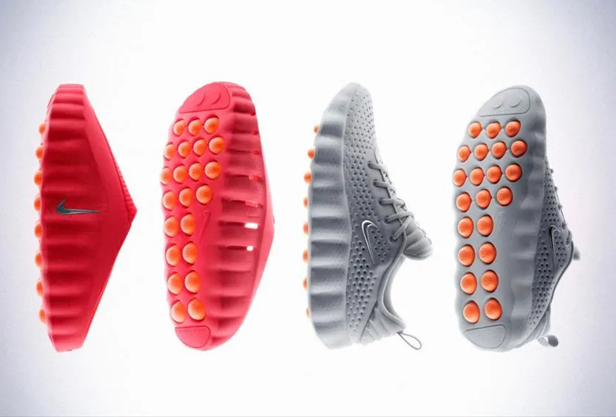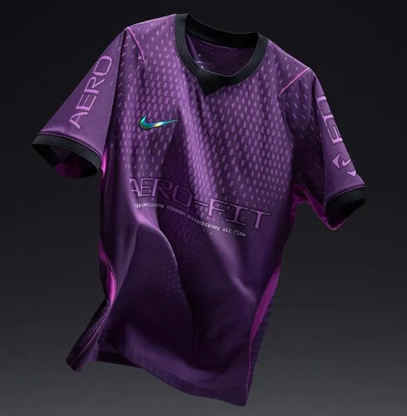
Project Amplify powered footwear system
Image credit: Nike, 2025
Nike has stood for more than just athletic performance for decades. It has stood for ambition, rebellion, and new ideas. But in the last few years, even the biggest name in sportswear seemed to lose some of its magic. Nike’s creative energy leveled off as competition grew, and customers’ habits changed. But in late 2025, when Nike unveiled its highly anticipated Air Milano Olympics Collection, it felt like Nike again: bold, experimental, and utterly sure of itself.
This collection, which included the Therma-Fit Air Milano Jacket, the Project Amplify powered footwear system, and the futuristic Nike Mind 001 and 002 sneakers, was a significant milestone in Nike’s brand revival. Each piece showcased Nike’s unparalleled ability to blend fashion, innovation, and emotion, reaffirming its leadership in the sportswear industry.

Therma-Fit Air Milano Jacket
Image credit: Nike, 2025
The Innovator Comes Back
The new Air Milano Jacket changes the way we think about performance clothing. It combines style with high-tech features by using inflatable air chambers to control temperature. This product not only celebrates the upcoming Olympics, but it also puts Nike at the forefront of wearable design, according to Forbes. Project Amplify, on the other hand, introduces the brand’s first motor-assisted running system. This innovative system is designed to cater to a broader range of runners, providing a gentle push to help slow runners. It’s a fantastic blend of biomechanics and design empathy that considers the emotional and physical journey of runners who don’t fit the mold of a traditional athlete.

Nike Mind 001 and 002 footwear
Image credit: Nike, 2025

Aero-Fit cooling technology
Image credit: Nike, 2025
And then there are the Nike Mind 001 and 002 shoes, which are designed to improve the connection between the foot and the ground and “train awareness” rather than just speed. These new ideas demonstrate Nike’s resilience, showing that the brand is back to doing what it does best: pushing limits, changing industries, and altering the way people perceive sports.
The Ups and Downs of Nike’s Rollercoaster
Nike’s story has never been a straight line. It went from a small startup in Oregon to a $150billion global giant, a great lesson in branding and management, but it’s also a story of taking significant risks and changing.
The Golden Years: When New Ideas and Identity Come Together
Nike not only made athletic clothes but also shaped cultural identity, from the Air Jordan revolution in the 1980s to the “Just Do It” campaign. It wasn’t about selling shoes; it was about the faith of sale. Its partnerships with celebrities like Michael Jordan, Serena Williams, and Virgil Abloh blurred the lines between sports, art, and lifestyle.
The Problems: Changes in Technology and Brand Fatigue
But by the early 2020s, Nike’s brand was getting tired. Over-commercialization, supply chainissues, and a heavy reliance on old icons began to dull its creative edge. Nike had to rethink its strategy because competitors like Adidas, On, and Hoka were all combining new ideas with niche authenticity.
The Rebirth: Innovation with a Purpose
The Air Milano collection brought Nike back to life in 2025, meaning innovation is once againpart of who they are. The brand uses cutting-edge technology and emotional storytelling to show the world that it doesn’t follow trends; it makes them.
The Marketing Genius That Keeps Nike Going
Nike’s marketing strength has always been more than just ads; it’s about connecting with peopleon a cultural level. Nike’s ads have always been about more than just sports; they’ve been about the human spirit, fostering a deep emotional connection with its audience.
1. Emotional Branding: Nike doesn’t sell things; they sell power. The “You Can’t Stop Us “campaign and “Dream Crazy” with Colin Kaepernick turned sportswear into activism.
2. Working together to be creative: Nike’s collaborations with designers like Sacai, Off-White,and Jacquemus are a testament to its commitment to staying relevant in the fashion world whilestill being known for making good shoes.
3. Data and Personalization: The Nike App ecosystem includes fitness tracking, personalized product suggestions, and virtual try-ons, which keep customers coming back by giving them a good experience.
4. Sustainability as Strategy: Nike’s ‘Move to Zero’ campaign is a testament to the brand’scommitment to sustainability. This initiative promises to make the company carbon neutral and use circular design, linking the brand’s mission with global awareness. By focusing on sustainability, Nike not only contributes to environmental protection but also aligns its brand values with those of its socially conscious consumers.
Why Nike’s Design Philosophy Wins: Fashion Meets Function
Nike’s best quality is its ability to combine form, function, and feeling. Its products are made for athletes, but made for culture. Nike’s success stems from the idea that design isn’t just about how things look; it’s also about finding creative ways to solve problems. For example, the Air Force 1 is a streetwear icon, and ISPA (Improvise, Scavenge, Protect, Adapt) is a futuristic style.
The Air Milano line takes this idea forward and shows how storytelling, innovation, and emotional design can work together perfectly.
The Bigger Lesson: Change or Die
Nike’s story teaches brands everywhere that they must change.
Even famous people around the world need to change, but they don’t have to forget where they came from. They need to remember what made them strong. Nike’s comeback shows that the brands that do well are those that stay human at heart while having a vision for the future. This is especially true in a time when AI, digital fashion, and performance tech are all the rage.
Making Future Brand Leaders
We prepare students at Raffles to be leaders in this new age of creativity and strategy, where fashion, new ideas, and storytelling come together.
Arman POUREISA
Marketing Manager
References
Forbes. (2025, October 23). Nike unveils Air Milano Olympics jacket and powered footwearsystem. Retrieved from https://www.forbes.com/sites/timnewcomb/2025/10/23/nike-unveils-air-milano-olympics-jacket-and-powered-footwear-system/
Nike. (2025). Therma-Fit Air Milano Jacket from Nike features inflatable air; Project Amplify isdesigned to make slow running easier with motorized assistance; Nike Mind 001 and 002footwear aims to activate sensory awareness in the foot; New mesh advances Nike’s Aero-Fitcooling technology.Forbes.
McKinsey & Company. (2025). The State of Fashion 2025: Performance and Purpose.
Kapferer, J. N., & Bastien, V. (2024). The Luxury Strategy: Break the Rules of Marketing toBuild Luxury Brands (3rd ed.). Kogan Page.
WARC. (2025). Sportswear innovation and consumer experience: Lessons from Nike and Adidas.






